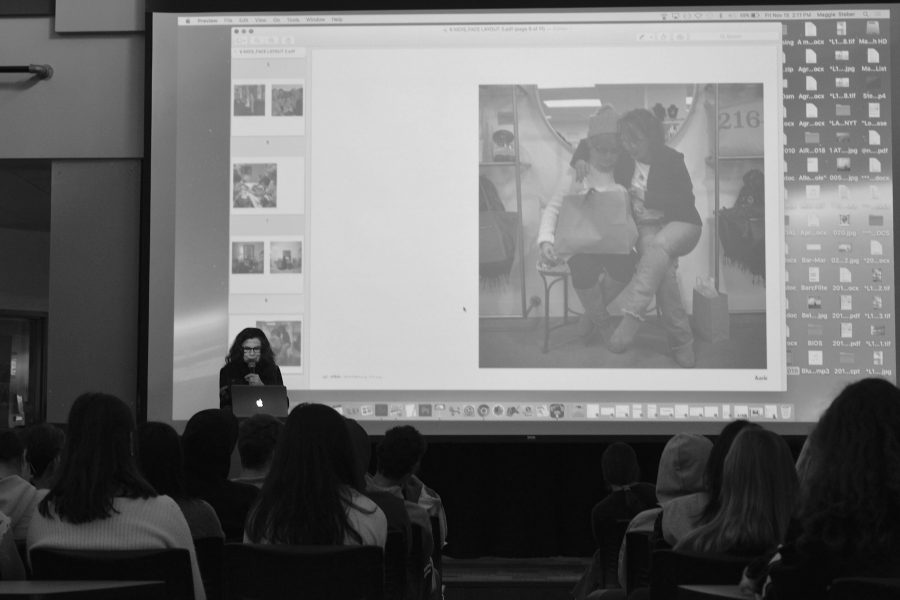Recently, Paly’s renowned Media Arts Center hosted a notable guest speaker: Pulitzer Prize Finalist Maggie Steber. The American documentary photographer spoke to a beginning journalism class on Nov. 15.
Steber, who was nominated for a Feature Photography Prize in the Pulitzer Prize, spoke about her time in Haiti as a photographer and her experience as a journalist. Her talk stressed the increased importance of journalism in today’s world.
“(Steber) talked about how photojournalism provides one with several opportunities to make life-changing connections with people who have gone through a lot,” junior beginning journalism student Eve DeGeronimo said. “She also explained how photos capture stories that are rooted in years of someone’s life experiences.”
In Steber’s one and one-half hour talk, she aimed to influence how students view photojournalism, according to sophomore Benjamin Antonow, who is also taking beginning journalism.
“It influenced me to approach different aspects of photojournalism,”Antonow said. “When I see photographs in stories I’ll observe them a different way, and if I’m taking photos I’ll come at the process in a different way.”
According to Antonow, Steber’s suggestions were supported largely by recounts of her personal experience.
“I’m always trying different things with portraiture, because at some point, it’s just a picture of a person,” Steber said. “So what can we do to make it more interesting?”
Known for challenging typical photojournalism rules by taking non-candid or posed photos, Steber suggested conversing with the subject before taking a photo. Steber also talked about her experience photographing her mother at the end of her life, and how she made the difficult decision to release the photos to inspire other journalists.
“(Steber) was deeply moved by the project that she worked on while her mother was in an elderly home,” DeGeronimo said. “She wasn’t going to release the photography in the first place, but after some consideration, she realized that her story was very influential. She knew it would inspire other journalists to share their own stories.”
According to Antonow, seeing a drastically different style of photography in journalism inspired students to challenge assumptions they had about photojournalism.
“It was really interesting, that all of her best photos weren’t candid, ” Antonow said.
Steber believes journalists should dig deeper than surface level observation, and encouraged photojournalists to interact with their subject. She encouraged the students to go beyond what they may be traditionally taught to do — conduct professional, impersonal interviews, and take photos through the eyes of an objective bystander. Instead, she promotes journalists to create a relationship with their subject, to get to know them in order to get a fuller perspective of whatever story they’re telling.
“If we’re only going to see it through the eyes of (an) outsider, we’re never going to get it right,” Steber said. So that’s a really important thing to understand.”
Steber said that good journalism comes from having an open mind, emphasizing the importance of being unbiased.
“If you’re going to be a journalist, whether it’s a photographer or a writer, learn as much as you can, and then go in like a baby and let these people write their story on you like you’re the blank page,” Steber said.
Finally, Steber encouraged students to use photography and writing ultimately as an outlet for releasing stress.
“You all at your age, and now in this moment are under so much stress, and I think photography and writing is a way to work through things,” Steber said. “I really want to encourage you to think about this, because I think there’s never been this much pressure on people your age now. All kinds of pressure, which you’re very familiar with. So think about using the camera to tell your own story. You never have to show these pictures to anybody.”



